6 Campaigns to Kick Your In-Browser Messaging into High Gear
Published on April 21, 2016/Last edited on April 21, 2016/6 min read


Todd Grennan
Content Production Principal, Content Marketing at BrazeDear reader: This blog post is vintage Appboy. We invite you to enjoy the wisdom of our former selves—and then for more information, check out our new Cross-Channel Engagement Difference Report.
When it comes to customer messaging, the web is the next big frontier.
Mobile apps have long had messaging tools (including mobile push notifications and in-app messages) that allow for direct engagement with their users, but the options for reaching website visitors have lagged behind. With the rise of two distinct web messaging channels, that’s finally beginning to change.
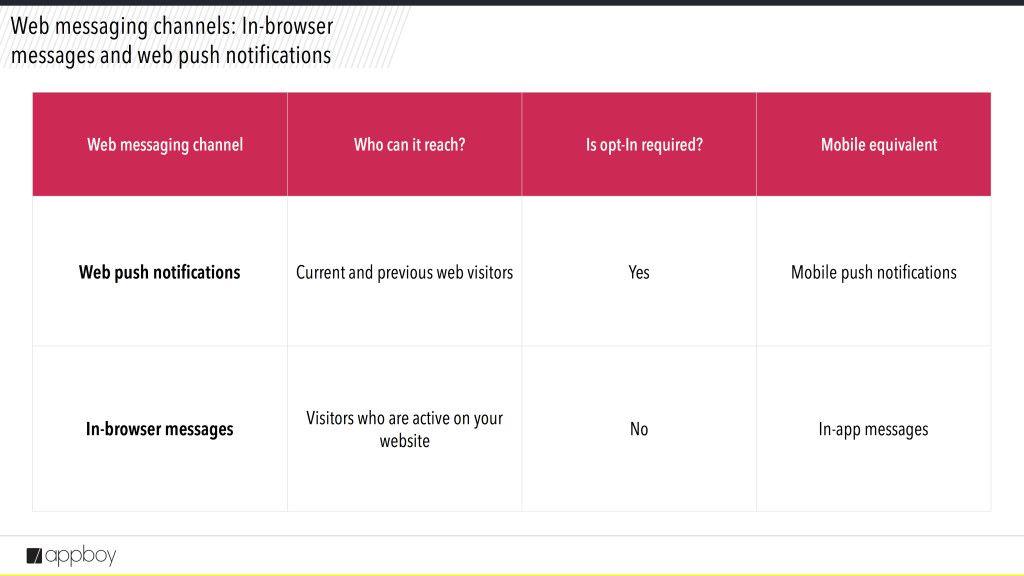
Web push notifications have begun to attract significant attention from marketers, but brands shouldn’t forget about the other major web messaging channel: in-browser messages.
This message type is the web version of in-app messages and functions very similarly, allowing marketers to easily and unobtrusively communicate with people who are active on their website. And like in-app messages, in-browser messages come in a variety of formats—simple, direct ones similar to push notifications in design, and larger ones capable of supporting more complex messages and rich content.
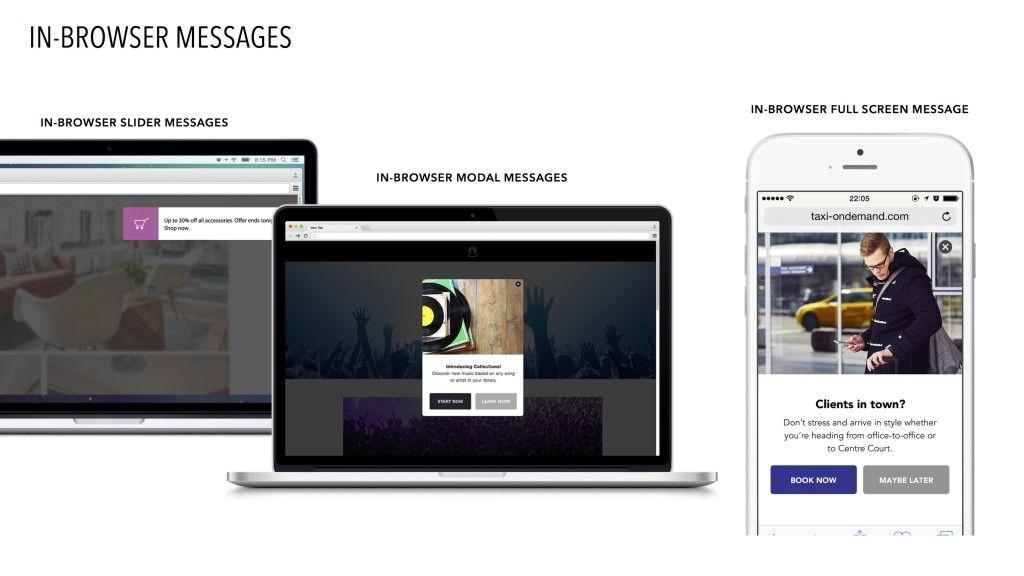
By taking advantage of this powerful, versatile message type, marketers can communicate with website visitors without needing developers to create pop-ups. Marketers can encourage stronger customer engagement, retention, and monetization (and increase the odds that their web visitors opt in for web push, for good measure).
It’s time to start thinking about how your brand can make the best use of this exciting new outreach channel. To help you get there, we’ve highlighted six common campaigns that in-browser messages can be used in, and that can help help you build strong, durable relationships with your customers. Take a look!
1. Onboarding campaigns
The first time someone opens a mobile app, the experience that greets them can have a major impact. If they leave that session without understanding the value of the app, they’re unlikely to return; if, on the other hand, they receive onboarding-focused in-app messages that covers the app’s benefits and how to take advantage of them, they’re going to have a real reason to come back.
With in-browser messages, it’s now possible to give new web visitors a similar experience. For brands with websites that require a login (such as many social networking, streaming media, or financial sites), you can use in-browser messages to engage customers after they create an account. Walk them through your website’s features and how to make the most of them. Your customers will get more out of your web presence and you’ll increase the odds that they continue engaging with your brand.
2. New feature campaigns
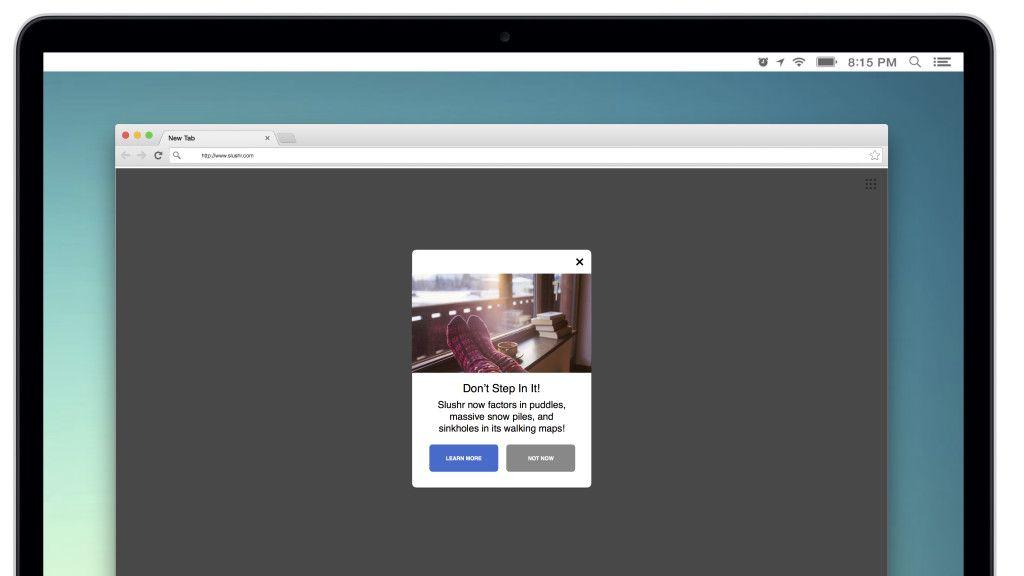
When you add an important new feature to your brand’s website, your customers should know about it. Some regular visitors will find the new feature on their own—but many won’t. With in-browser messages, you can highlight new features, functionalities, and any other important changes to your website in an involving, unobtrusive manner. By incorporating deep linking into your in-browser messages, you can even direct customers right to the page or section you’re looking to highlight, making it more likely that customers check them out. By helping them to understand how to make use of new features and functionalities as they appear, you can increase the value that the site provides, giving them more reasons to stick around.
3. New content campaigns
If your brand regularly publishes content—whether that’s daily blog posts or monthly digital editions of your print magazines—this messaging channel can be a major asset. When a new piece of content becomes available, brands can automatically trigger in-browser messages that inform web visitors about the piece and deep link them to a page within your website where they can engage with it. That makes it possible to increase web visitors’ awareness and consumption of your brand’s content offerings without inundating loyal customers with emails or push notifications.
4. Nurture campaigns
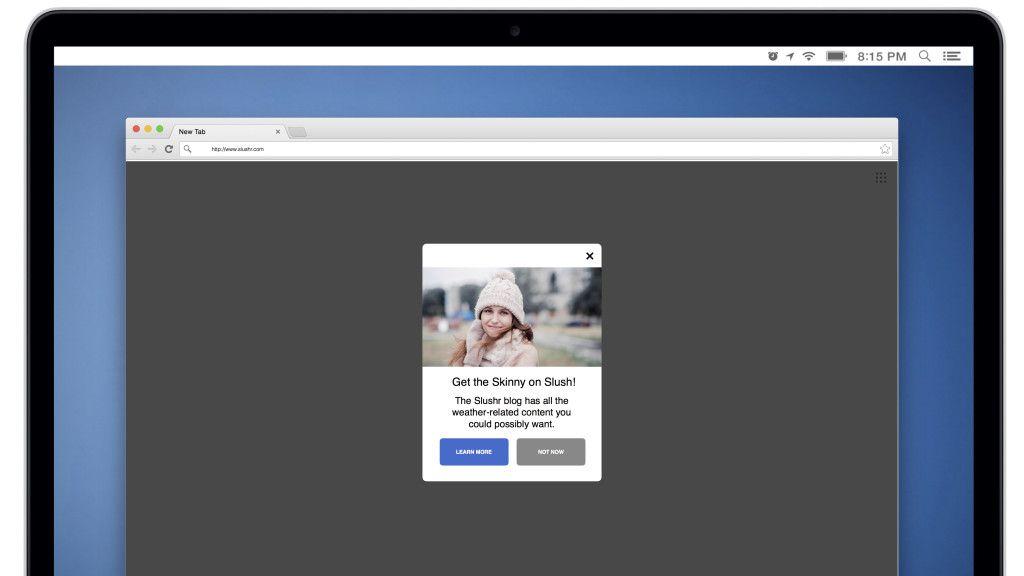
People are creatures of habit. Sometimes that can be a good thing—for instance, when you have a customer who consistently visits your website every day. But if this kind of loyal customer never deepens their engagement with your brand, you may be missing out on potential revenue. Think of it as an opportunity: if you can successfully encourage them to explore more of your website, there’s a strong chance that you can increase the amount of time they spend with your brand and potentially boost purchases or other conversions. In-browser messages give you a simple, seamless way to do that.
Imagine that you have a customer who visits your website’s blog three times a week, but has never made a purchase from your site’s ecommerce page. To encourage them to broaden their browsing, you could send them an in-browser message that uses a discount or other incentive to motivate them to visit your ecommerce page and potentially make a purchase. If they’re interested, they’ll click on the message and find themselves directed to the relevant page; if they’re not, they can simply close the message and continue reading.
5. Promotional campaigns
If your brand needs to let customers know about a big discount or other promotion, in-browser messages can play a significant role. When you’re looking to tell people who regularly visit your brand’s web presence about a promotion, in-browser messages give a variety of options for doing so—you can target them for a brief, simple message, which will appear on the screen in a manner similar to a push notification, or use a screen-filling rich in-browser message to definitively grab your customers’ attention.
Because in-browser messages only reach people who are currently on your brand’s web presence, they’re most effective for reaching customers who regularly engage with your website. So if you’re looking to tell less-engaged web visitors about a new sale on athletic shoes, you may have more success using web push or email to capture their attention. For the best results, consider taking advantage of all these channels as part of a coordinated multichannel promotional campaign.
6. Cross-promotional campaigns
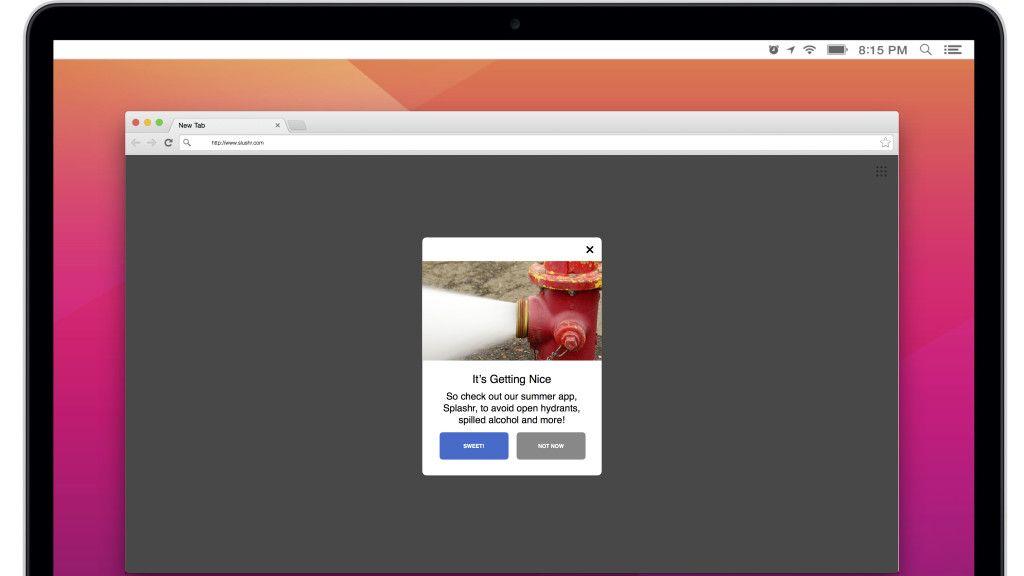
For brands that operate a web presence that includes multiple distinct websites, in-browser messages can be an opportunity to encourage customers to engage more broadly with their different web properties. Imagine that your brand has a general news site and ancillary sites focused on business news, entertainment news, and sports news. You could target web visitors whose browsing behavior suggests that they’d be interested in one of your other sites, then send them an in-browser messaging highlighting that other site and linking to it.
Not every recipient will expand their engagement with your brand. But by taking advantage of this messaging channel, you can improve customer awareness of your brand’s full web presence and encourage customers who ARE interested to browse more broadly.
Anything else?
By making it possible to communicate directly with web visitors without having to rely on developers, in-browser messages empower marketers and support strong customer/brand relationships on the web.
Related Tags
Releated Content
View the Blog
A day in the life of a data scientist on the BrazeAIᵀᴹ forward-deployed engineering team

McKay Jensen

The new inbox reality: How iOS changes are reshaping email marketing

Aparna Prasad

Experience optimization: Turning data insights into better journeys
